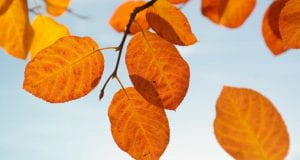Last week we met with year six Donvale. We had the first of five conferences to help us build teamwork, leadership and help us prepare for year seven. It also helped Kew to get to know Donvale and vice versa. We had lots of activities, like a newspaper tower, cup tower and a plank competition.
First we did a newspaper tower competition. We were given a newspaper and a roll of masking tape. We had ten minutes to make our tower. At first we tried to make it like a temple with four legs, then a sheet of newspaper and repeat. That didn’t really work so we tried using the tape as a holder and making lots of rolls, then stacking them together. When we had just over three minutes left we realised that they never said we couldn’t tape it to the floor, so we quickly taped it to the floor, got rid of the barrier and continued attempt number two. There were only three notably tall towers. Ours was one of them. Then the tallest tower fell over and we were the winners. During this activity we didn’t use great communication at the start, but in the middle and end our communication was good. We also had pretty good collaboration and all contributed.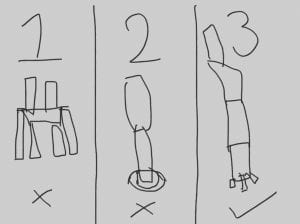
The next thing we did was a cup challenge. We had ten minutes and were given six cups, a long piece of string and four rubber bands. You also had scissors, but they couldn’t touch the cup, like everything on your body. At first we tried to put the bands around the cups and place them into a tower, but we would keep accidentally touching the cup. Next we tried to use the string and wrap it around the cups, but they would just slip out. At last, when we had under two minutes left, we came up with the idea that if you cut the string into small pieces and tied them around the bands. Then we would put the elastic band around the cup an put it in place. This strategy worked great, until we ran out of bands. Then we had to try to remove the bands, but just ended up knocking over the tower. We didn’t use good communication using this activity because we were all yelling our own ideas and getting frustrated that it wasn’t working and our ideas weren’t being listened to.
Our final challenge was a plank competition. As a team we had to plank. We could swap out if we needed to, but you had to have over half of your team planking at once. We had nine people able to plank, (one had a broken arm, so obviously would not be able to plank and he was our moral support.) so we had to have at least five people planking. We were working really well as a team and listening when people wanted to swap. We were in the top two and our supervising adult was umpiring. We were going well, but it was getting really stressful and everyone was crowding around the last two teams. Our supervisor was meant to be the person umpiring our team and we would go out if she said so. Because everyone was crowding around it was very noisy and hard to hear When people wanted to change. Some of the other teachers had started judging us and they said that we didn’t have enough people down because one of our team member’s shirt was hanging down and it looked like she was on the ground. We thought this was unfair since our own teachers were meant to be judging when we were out.

In between every activity we had a conversation with different people like:
Mrs De Paiva about Robinson River.
Jen Dooley about our smart and primitive brains.
Mr Parks about our different virtues.
It was great to meet the Donvale kids and learn a bit about them. We all had a great time participating in these challenges and I look forward to having our next conference.
My favourite activity was the newspaper tower. What was your’s?
 Recently we performed our production, Hanging Onto The Bottom Of The World. It is a play about Australian history. I was the Governor Of Western Australia.
Recently we performed our production, Hanging Onto The Bottom Of The World. It is a play about Australian history. I was the Governor Of Western Australia. Challenges:
Challenges: Dromedary camels have one hump. They live in North Africa, The Middle East and Asia. They are also known as Arabian camels.
Dromedary camels have one hump. They live in North Africa, The Middle East and Asia. They are also known as Arabian camels. Bactrian camels have two humps. They live in Mongolia and China. They have long fur because it can get colder in their environment. Bactrian camels are the only true wild camels still living. They are critically endangered and there are only about 400 left.
Bactrian camels have two humps. They live in Mongolia and China. They have long fur because it can get colder in their environment. Bactrian camels are the only true wild camels still living. They are critically endangered and there are only about 400 left. This year we had Book Chat. I really enjoyed it. Book Chat is kind of like a Book Club, except we have a choice between 5-7 books. When we get our book, we get a book mark with 3 or 4 questions on it that we can think about when we read the book. We have 4 weeks to read the book and then we talk about it with the other people who read the same book as us.
This year we had Book Chat. I really enjoyed it. Book Chat is kind of like a Book Club, except we have a choice between 5-7 books. When we get our book, we get a book mark with 3 or 4 questions on it that we can think about when we read the book. We have 4 weeks to read the book and then we talk about it with the other people who read the same book as us. Saroo’s story is that he gets lost when he is 5 years old at a train station. He is waiting for his brother, Guddu, and thinks that he is on a train so he boards the one on his platform and then falls asleep. When he wakes up the train is moving, the doors are locked and there is no one else in the carriage. When he gets out of the train he is in Culcutta, India (Kolkata). He starts boarding trains in the hope of returning to the original station he was at. After many nights on the streets and in a Juvinile Centre, Saroo is taken to an orphanage and put up for adoption. In a couple of weeks he is on a plane heading to Australia to meet his adoptive parents. As Saroo gets older he starts to wonder about where he was from and when he is in his twenties he starts to search using Google Earth and other online websites.
Saroo’s story is that he gets lost when he is 5 years old at a train station. He is waiting for his brother, Guddu, and thinks that he is on a train so he boards the one on his platform and then falls asleep. When he wakes up the train is moving, the doors are locked and there is no one else in the carriage. When he gets out of the train he is in Culcutta, India (Kolkata). He starts boarding trains in the hope of returning to the original station he was at. After many nights on the streets and in a Juvinile Centre, Saroo is taken to an orphanage and put up for adoption. In a couple of weeks he is on a plane heading to Australia to meet his adoptive parents. As Saroo gets older he starts to wonder about where he was from and when he is in his twenties he starts to search using Google Earth and other online websites. A time that my family celebrate is the AFL Grand Final. It is when the top two AFL teams play against each other to see who is the best. Whoever wins gets an enormous trophy. I barrack for Carlton, but we aren’t very good, I think the last time we were in a Grand Final was in the 1970’s – 80’s. This a haiku that I wrote about the Grand Final:
A time that my family celebrate is the AFL Grand Final. It is when the top two AFL teams play against each other to see who is the best. Whoever wins gets an enormous trophy. I barrack for Carlton, but we aren’t very good, I think the last time we were in a Grand Final was in the 1970’s – 80’s. This a haiku that I wrote about the Grand Final: Last week we went to Toonallook. We had so much fun and I wish we hadn’t left. We had so many new experiences and learned how to play King Ball (giant 4 square).
Last week we went to Toonallook. We had so much fun and I wish we hadn’t left. We had so many new experiences and learned how to play King Ball (giant 4 square). 

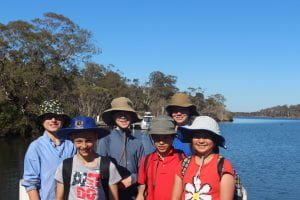 Challenges:
Challenges:

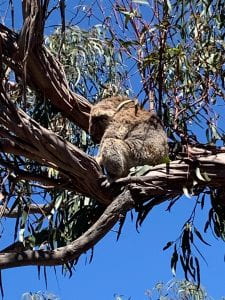
 This is my avatar. I created it on a website called cartoonify. You can make yourself look like a cartoon.
This is my avatar. I created it on a website called cartoonify. You can make yourself look like a cartoon. This term we have been learning about the Gold Rush. The unit was called My Hard Road Ahead. We went on camp to Sovereign Hill to start off the unit. Then we made a diorama to showcase our working. We were put in pairs and made a building and a second square. I was with Pat. We made
This term we have been learning about the Gold Rush. The unit was called My Hard Road Ahead. We went on camp to Sovereign Hill to start off the unit. Then we made a diorama to showcase our working. We were put in pairs and made a building and a second square. I was with Pat. We made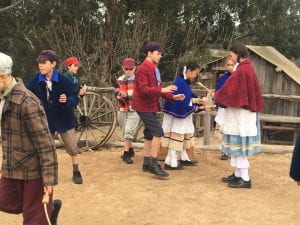
 I used many PLA’s during this unit including Imagination, Curiosity, Communication, Collaboration, Resilience, Knowledge and Courage. I used Imagination when we had to design our building because we had to try to figure out how to make certain things. I used Curiosity when we had to make things that we couldn’t make at school. We had to use Communication when Pat and I had to decide who was taking home each square and when we had to decide who was doing what. We had to use Collaboration when Pat or I couldn’t do something, so it was left to the other person, like when Pat didn’t have a smock so I had to do all the painting. We had to use Resilience when our pig wouldn’t stand up and we had to find a way to make it’s legs stay on. We used Knowledge when we had to use our prior knowledge and new knowledge to make the cottage. I had to use Courage when we went on the mine tours.
I used many PLA’s during this unit including Imagination, Curiosity, Communication, Collaboration, Resilience, Knowledge and Courage. I used Imagination when we had to design our building because we had to try to figure out how to make certain things. I used Curiosity when we had to make things that we couldn’t make at school. We had to use Communication when Pat and I had to decide who was taking home each square and when we had to decide who was doing what. We had to use Collaboration when Pat or I couldn’t do something, so it was left to the other person, like when Pat didn’t have a smock so I had to do all the painting. We had to use Resilience when our pig wouldn’t stand up and we had to find a way to make it’s legs stay on. We used Knowledge when we had to use our prior knowledge and new knowledge to make the cottage. I had to use Courage when we went on the mine tours. We did so much! First, we went to Sovereign Hill, then we completed the school program, then we researched our buildings and made a diorama and, finally, programmed a robot.
We did so much! First, we went to Sovereign Hill, then we completed the school program, then we researched our buildings and made a diorama and, finally, programmed a robot. Last week was Book Week. We had an visit us. He talked to us about writing stories. It was amazing.
Last week was Book Week. We had an visit us. He talked to us about writing stories. It was amazing.